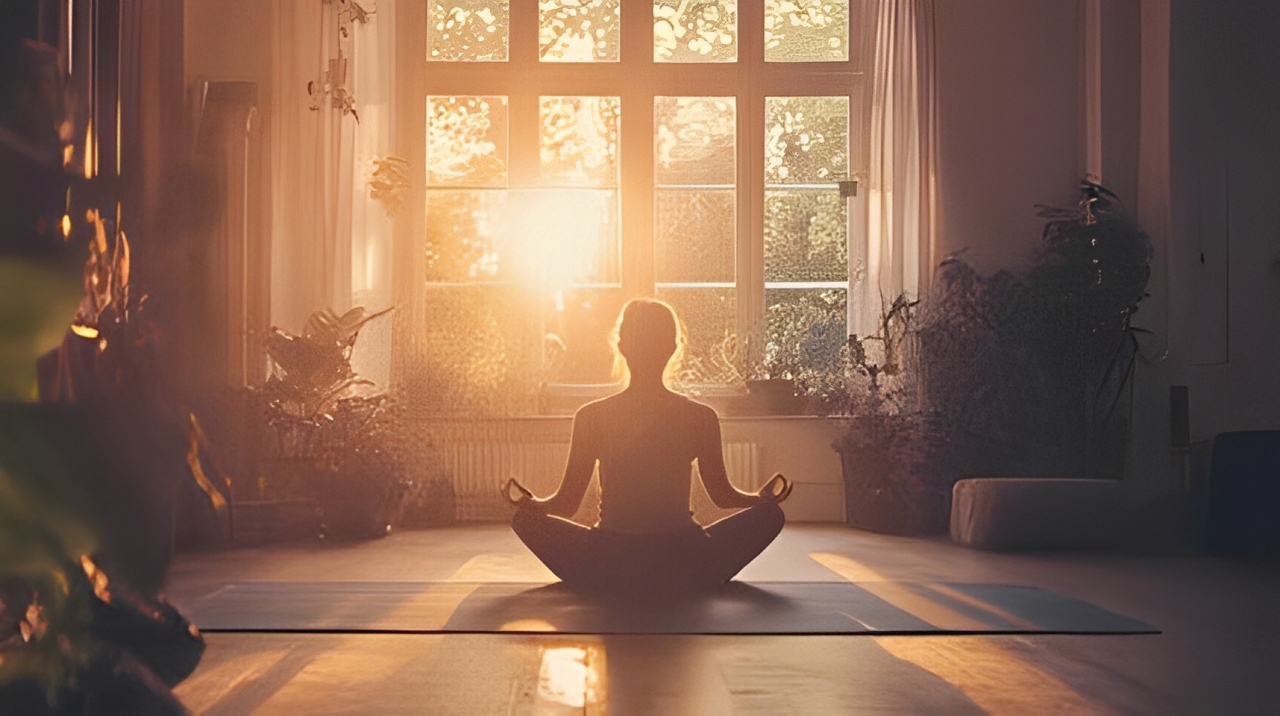Discover the transformative benefits of The Power of Visualization: Enhancing Your Meditation Practice Smartfityoga. Unlock focus, relaxation, and creativity through effective mental imagery.
Introduction
Visualization is a potent tool in meditation that can elevate your practice and help you achieve greater mental clarity, relaxation, and personal growth. In recent years, the integration of visualization techniques with methodologies like SmartFitYoga has gained significant attention. SmartFitYoga, known for its holistic approach to physical and mental wellness, encourages mindfulness and intentionality through visualization, making it a natural complement to traditional meditation practices. In this post, we will explore how visualization enhances meditation and why SmartFitYoga provides an ideal framework for incorporating this powerful tool into your routine.
By focusing on the power of visualization in conjunction with SmartFitYoga, practitioners can unlock deeper layers of self-awareness, reduce stress, and increase overall well-being. Visualizing goals, peaceful environments, or positive emotions during meditation can activate neural pathways that improve mental focus, reduce stress, and foster creativity.
What is Visualization Meditation?
Visualization meditation is a technique that involves creating vivid mental images while in a meditative state. The process can be as simple as imagining a serene place or as specific as picturing personal goals being accomplished. The power of visualization lies in its ability to engage the mind, guiding it toward desired outcomes by focusing on the details of the image. This practice is not only about creating pleasant imagery but also about aligning your thoughts with your intentions, allowing the subconscious mind to work toward manifesting those goals in real life.
In SmartFitYoga, visualization is used in tandem with physical poses, promoting a deeper mind-body connection. While traditional meditation focuses solely on breath and awareness, visualization adds a layer of intentionality that can make the practice more dynamic and goal-oriented. For instance, while holding a yoga pose, you can visualize energy flowing through your body, or while meditating, you might visualize yourself achieving success or experiencing peace, bringing a sense of purpose to every breath and movement.
Why Visualization Works in Meditation
The effectiveness of visualization in meditation comes from the way the brain processes mental imagery. When you vividly imagine an event, situation, or goal, your brain activates the same neural circuits that would be activated if you were actually experiencing that situation. This phenomenon, known as “neural rehearsal,” strengthens the brain’s neural pathways and helps create the foundation for new behaviors, skills, and emotional states.
Neuroscience supports the fact that the brain does not distinguish between vividly imagined experiences and real ones. This means that visualizing success, relaxation, or a peaceful state can help train the brain to behave as if those experiences are already occurring. The power of visualization in meditation, therefore, is not just about creating positive imagery, but about using the mind’s inherent ability to shape reality.
How SmartFitYoga Enhances Visualization Meditation
SmartFitYoga, with its blend of mindful movements, breathing exercises, and meditative focus, serves as an ideal platform for incorporating visualization into your practice. Unlike traditional yoga, which primarily emphasizes physical alignment and flexibility, SmartFitYoga takes a more holistic approach.
Incorporating visualization into your SmartFitYoga practice doesn’t just help you meditate more effectively; it also reinforces the connection between mind and body, enhancing the impact of each yoga pose. Whether you’re visualizing a peaceful landscape during a stretch or imagining your goals coming to fruition during a balance pose, SmartFitYoga helps align your body’s movements with your mental intentions. This synergy between the body and mind makes visualization even more powerful in achieving your desired outcomes.

The Science Behind Visualization Meditation
To understand why visualization is so effective in meditation, we must first look at the science behind it. Studies in neuroscience show that when individuals visualize an action or a goal, the brain activates the same neural regions as if the action were actually being performed.
For example, if you visualize yourself achieving a personal goal, such as running a marathon or giving a successful presentation, Over time, this neural rehearsal strengthens the brain’s connections, making it easier to perform those actions in real life. In the context of meditation, this means that visualization can help you manifest desired results by priming your brain for success, relaxation, or any other goal you wish to achieve.
How to Incorporate Visualization into Your Meditation Routine
Incorporating visualization into your meditation routine requires patience, consistency, and intention. Below are some steps you can follow to ensure that your visualization practice is both effective and rewarding:
1. Set a Clear Intention
Before you begin your meditation practice, it’s essential to set a clear intention for what you want to achieve through visualization. Whether it’s improving your health, manifesting a specific goal, or simply finding inner peace, having a clear intention helps focus your mental imagery and directs your energy toward a specific outcome.
2. Create a Calm, Quiet Space
Visualization requires a calm and quiet environment where you can be fully present. Find a peaceful space where you will not be disturbed, and sit or lie down in a comfortable position. The more relaxed you are, the more effective your visualization will be.
3. Visualize with Detail
The effectiveness of your visualization depends on the level of detail you can incorporate into your mental images. The more vivid and precise your imagery, the more your brain will respond to it. Imagine every detail of your mental image—colors, sounds, smells, and textures. The more sensory details you add, the more real your visualization will feel, which enhances its impact on your mind and body.
4. Use Affirmations to Reinforce Your Visualizations
Along with mental imagery, using positive affirmations during meditation can help reinforce the visualization. Repeat statements that align with your goals and intentions, such as “I am calm,” “I am successful,” or “I am at peace.” These affirmations work in conjunction with your mental imagery, helping to solidify the visualization’s impact on your subconscious mind.
5. Practice Consistently
Aim to include visualization in your meditation routine at least a few times a week. Over time, you will notice that your ability to visualize becomes sharper, and the benefits of the practice will become more apparent.

Benefits of Visualization Meditation
The benefits of incorporating visualization into your meditation practice are vast and wide-reaching. Below are some of the key advantages:
1. Enhanced Focus and Clarity
Visualization helps improve mental clarity and focus by training the brain to concentrate on specific goals and intentions. This enhanced focus spills over into daily life, helping you stay more present and alert in your everyday activities.
2. Stress Reduction and Relaxation
By visualizing peaceful scenes or positive outcomes, you can reduce stress and promote relaxation. The act of visualization engages the parasympathetic nervous system, which helps counteract the effects of stress and anxiety, promoting a state of calm.
3. Improved Creativity and Problem-Solving
Visualization can stimulate the creative centers of the brain, making it easier to come up with new ideas and solutions. By visualizing scenarios where you overcome challenges or achieve success, you can foster greater creativity and problem-solving skills.
4. Positive Emotional Transformation
When you visualize positive emotions such as love, happiness, or gratitude, you are cultivating those emotions within yourself. Over time, this practice can help transform negative thought patterns and emotional states, leading to greater emotional balance and resilience.
Real-Life Applications of Visualization Meditation
Visualization is not just a tool for meditation; it can be applied to many aspects of life. Whether you are looking to achieve personal goals, improve your performance in a specific area, or simply create a sense of calm, visualization can help.
For athletes, visualization is often used to improve performance by mentally rehearsing plays, movements, or strategies. Similarly, professionals can use visualization to prepare for important meetings or presentations, mentally rehearsing their success.

Conclusion
Incorporating the power of visualization into your meditation practice, especially through SmartFitYoga, can lead to profound changes in both your mental and physical well-being. By setting clear intentions, visualizing with precision, and practicing consistently, you can transform your meditation experience and unlock your true potential. Whether you’re seeking relaxation, personal growth, or peak performance, visualization offers a powerful tool for achieving your goals and enhancing every aspect of your life.
Read also: Discover Ztoog.com The Future of Digital Information





